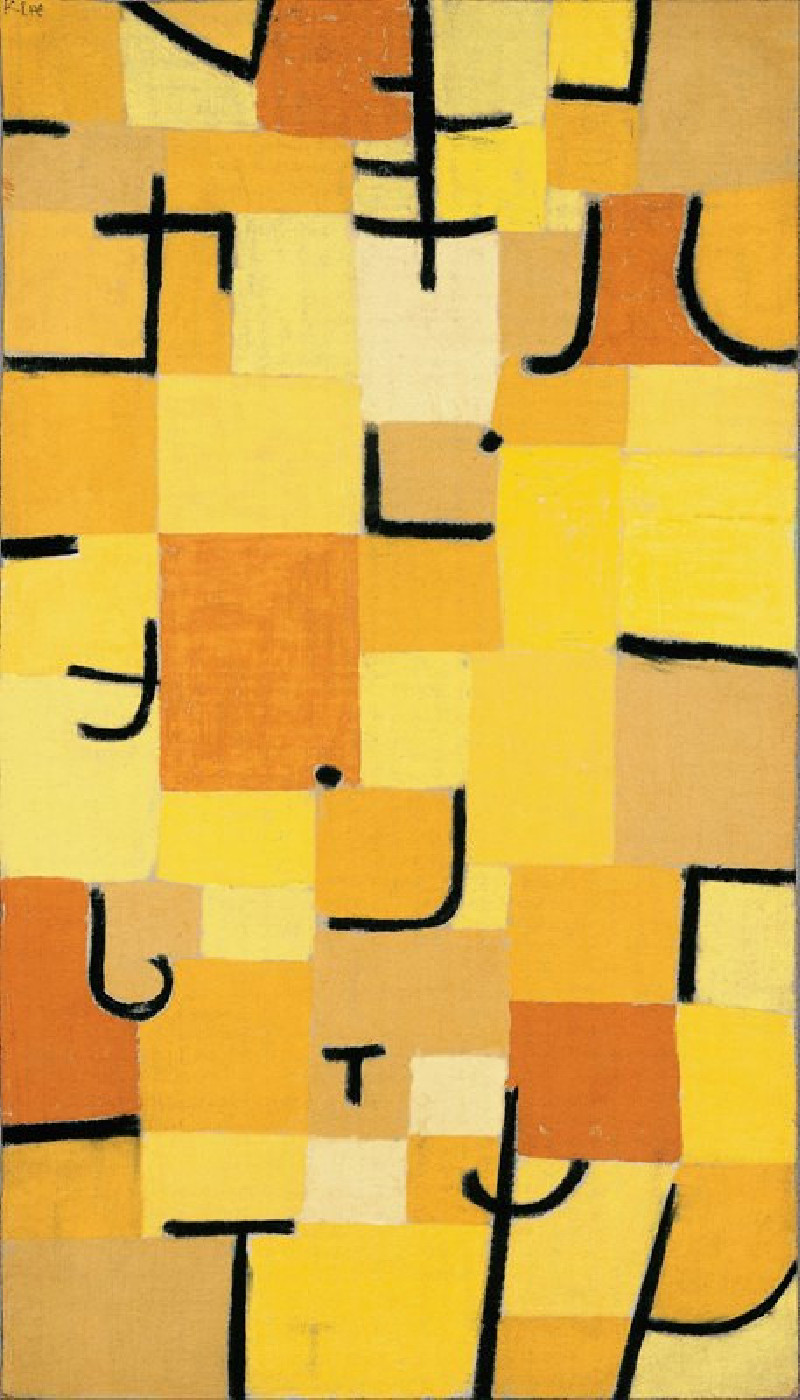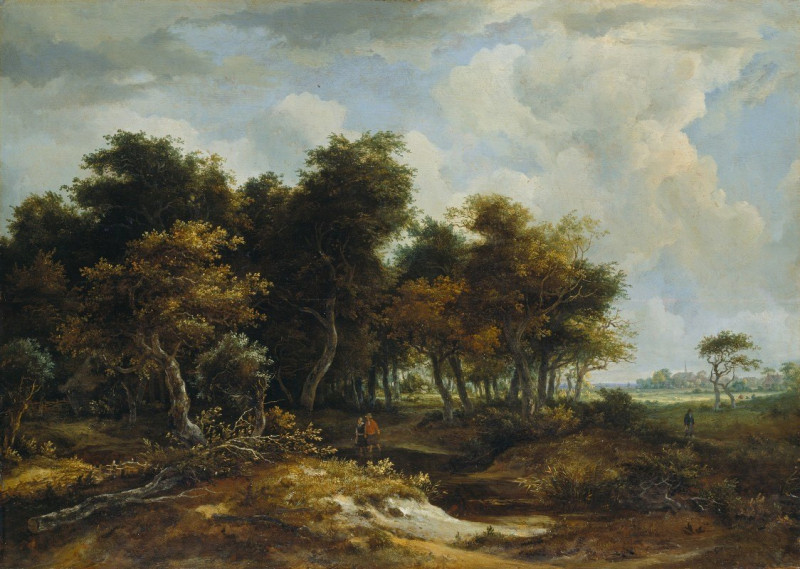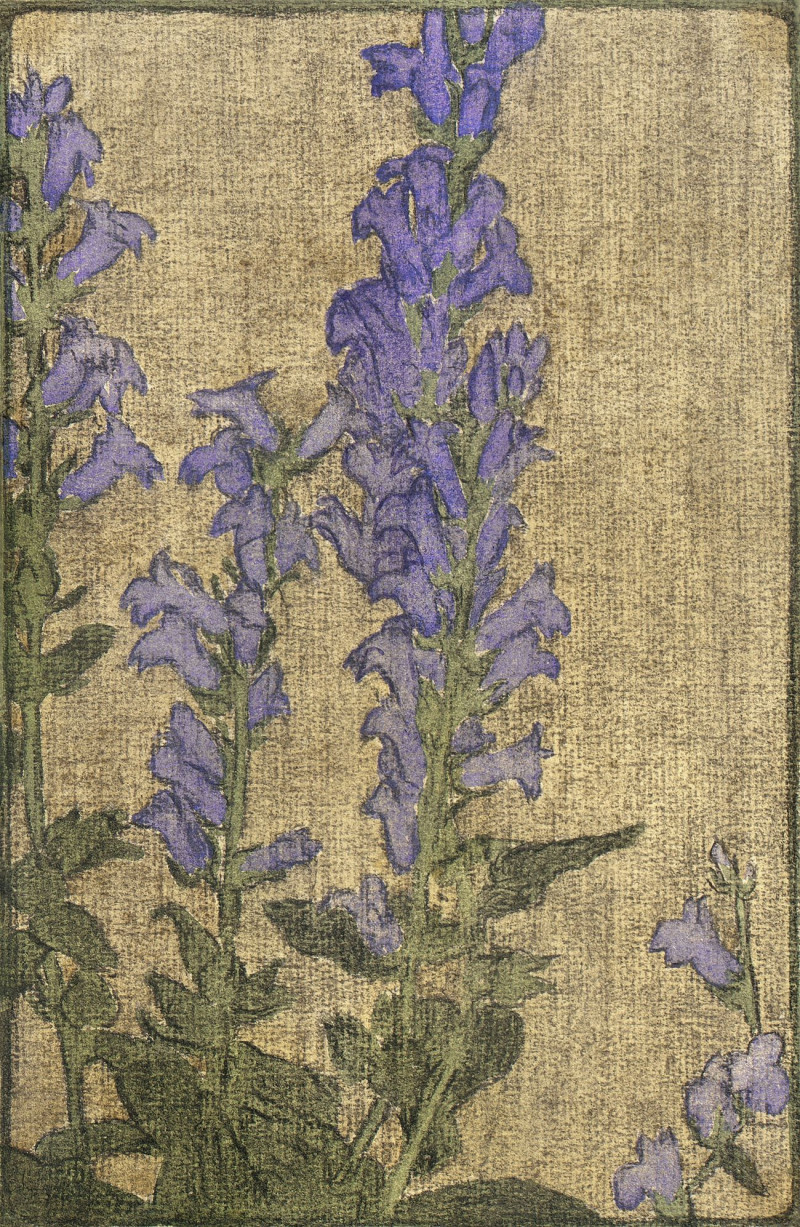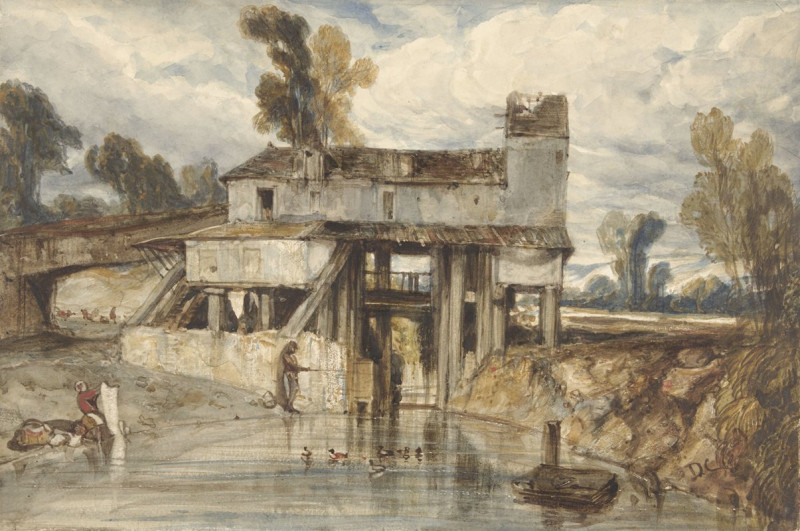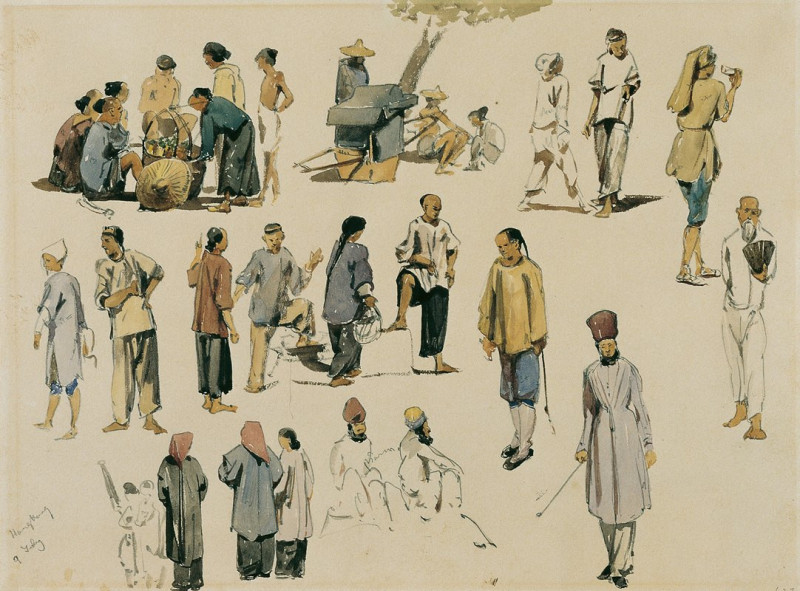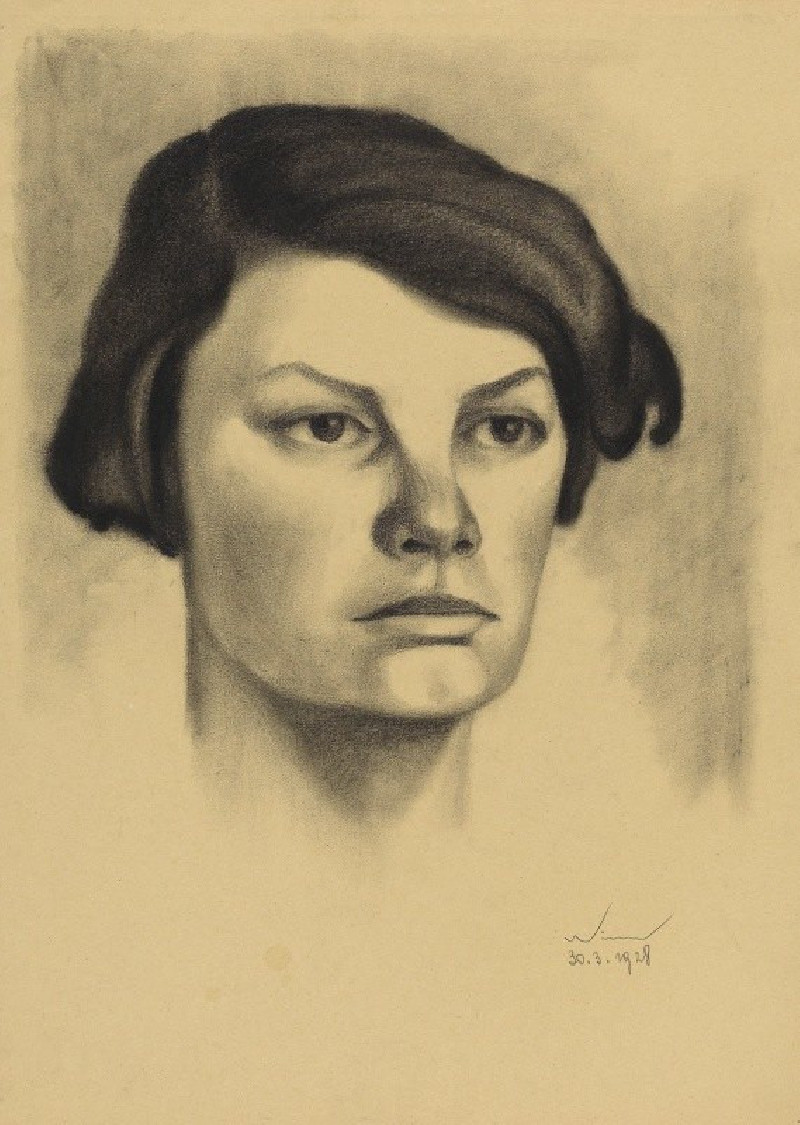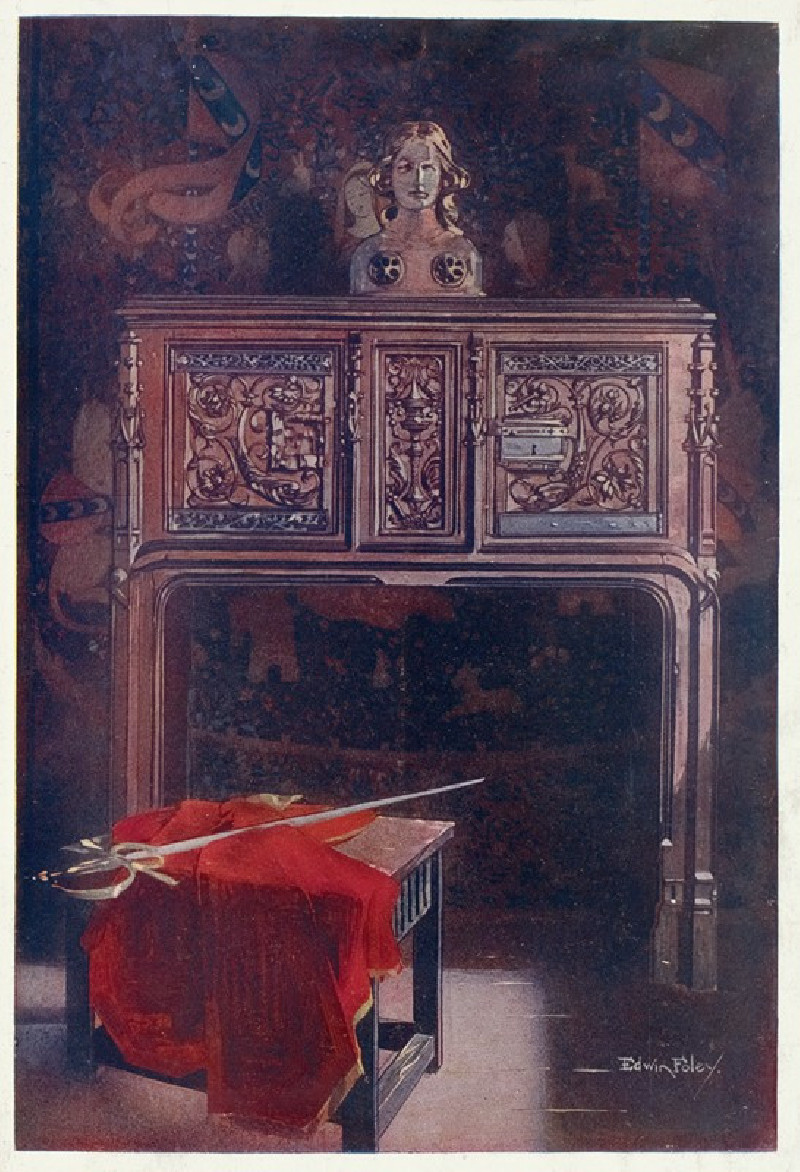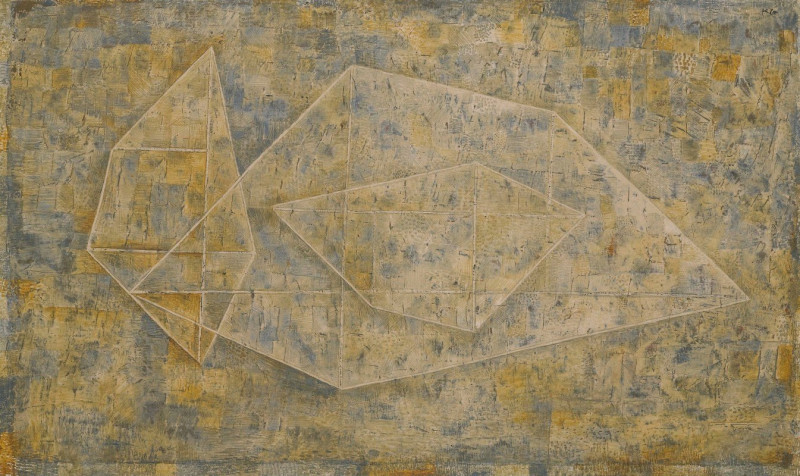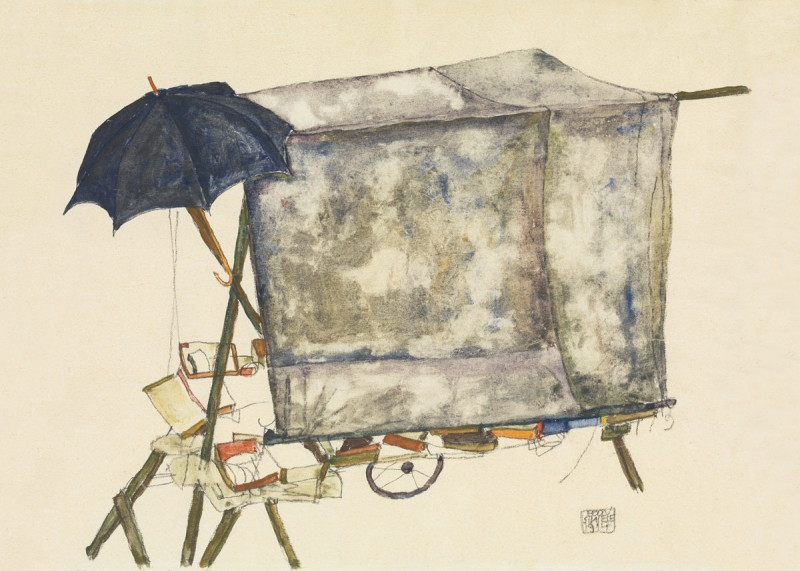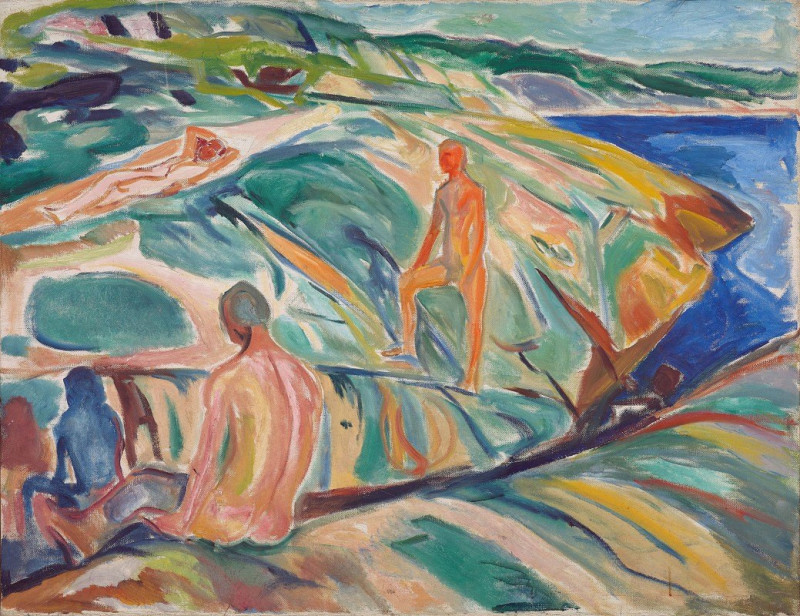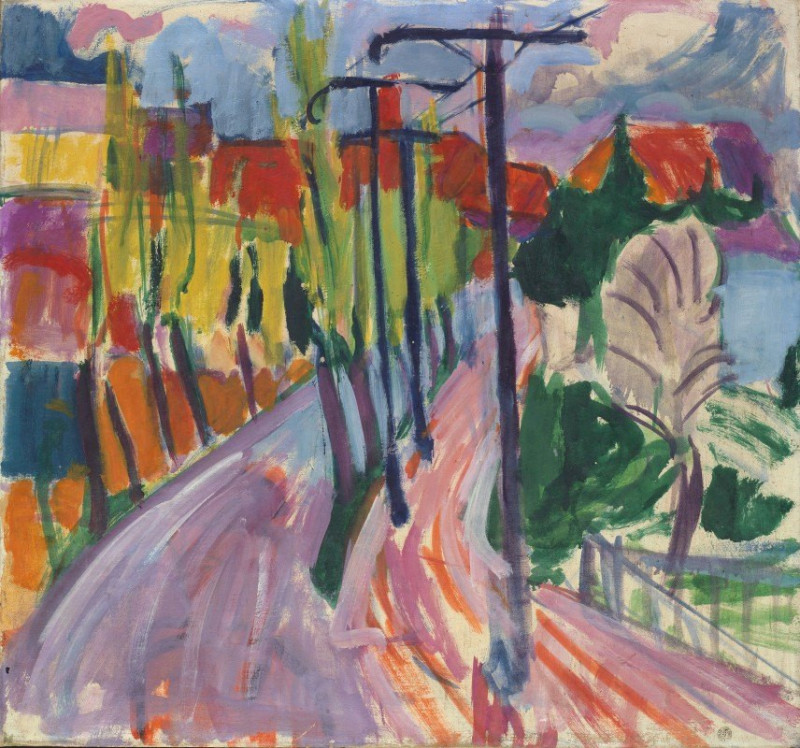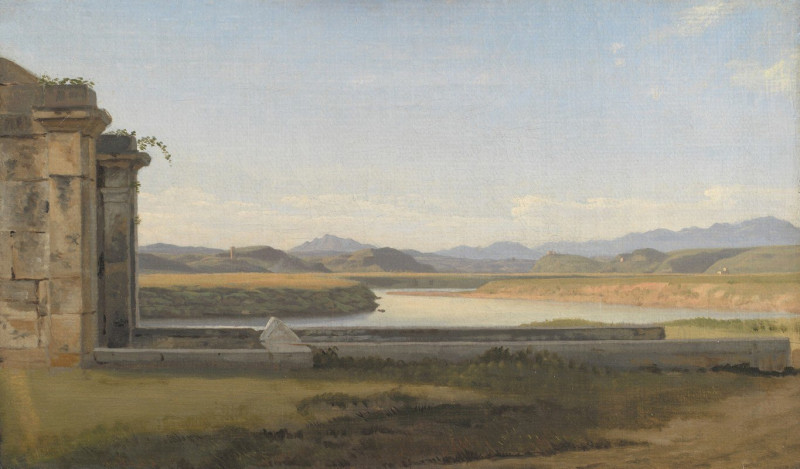Signs In Yellow (1937)
Technique: Giclée quality print
Recommended by our customers
More about this artwork
Paul Klee, a Swiss-German artist known for his unique expression and innovative theoretical practice, brings us another thought-provoking piece with "Signs In Yellow." Crafted in 1937, this painting stands out in Klee’s vast oeuvre for its abstract simplicity and intriguing use of form and color."Signs In Yellow" consists of a grid-like arrangement filled with various shades of yellow, interjected with elements of white and traces of a deeper orange hue. The composition is overlaid with whimsical black lines and symbols that resemble fragments of letters or cryptic signs. These playful yet mysterious elements invite viewers to interpret their possible meanings or simply enjoy their rhythmic dance across the canvas.Klee's background as a musician is often reflected in his artwork, and "Signs In Yellow" is no exception. The arrangement of signs and colors can be akin to a visual symphony where each element plays a note, contributing to a harmonious whole that resonates with a particular mood or emotion. This piece exemplifies Klee’s ability to blend color theory and graphic art, capturing an almost musical narrative within his abstract constructs.The choice of yellow, a color often associated with light, warmth, and creativity, dominates the canvas, possibly reflecting the artist's state of mind or his intentions towards invoking a sense of intellectual curiosity and joy. The interplay of light and dark tones, along with the dynamic signs, creates a vibrant yet enigmatic atmosphere that keeps the viewer engaged and contemplative."Signs In Yellow" is not just a painting; it is a journey into the essence of abstraction, a dialogue between form and meaning, and a demonstration of Paul Klee’s masterful ability to invoke deep reflection through seemingly simple elements.
Delivery
Returns
Paul Klee was a Swiss-born German artist. His highly individual style was influenced by movements in art that included expressionism, cubism, and surrealism. Klee was a natural draftsman who experimented with and eventually deeply explored color theory, writing about it extensively; his lectures Writings on Form and Design Theory (Schriften zur Form und Gestaltungslehre), published in English as the Paul Klee Notebooks, are held to be as important for modern art as Leonardo da Vinci's A Treatise on Painting for the Renaissance.

